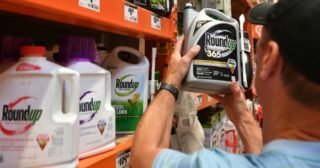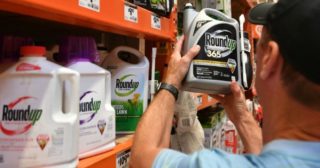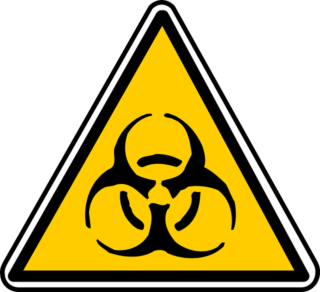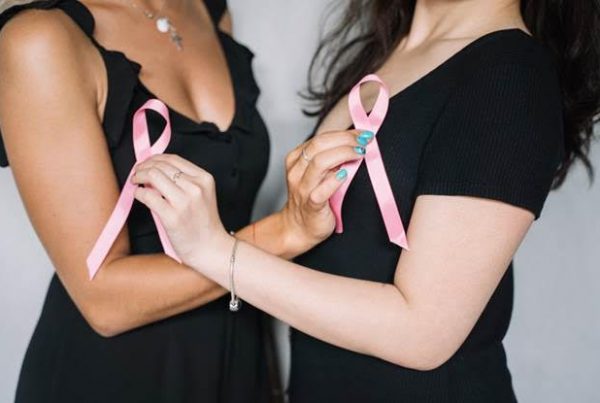We’re reading increasingly about the potentially significant threat to our health of toxins, but what exactly are they? How will they impact our longevity? What can we do to reduce our exposure to them?
Dr Duncan Carmichael is a functional medicine specialist and author of the book Younger for Longer. He says: “A toxin is simply something that damages the body. It could be an obvious toxin, like alcohol, that the body needs to clear in order to feel normal again. Or it could be largely invisible. Like the car exhaust we inhale while going about our daily lives, or the fumes that leach from certain cleaning products or carpets.”
Your Longevity and Toxins
There’s still much denial around the level of toxins in our environment. This, coupled with a general lack of awareness, makes for a challenging health-management situation. However, what is indisputable is that, with the pace of change and globalisation, the spread of technology and consumer products, eventually the entire planet will be affected by toxins in some form or another.
Toxic Threats Vary From Country to Country
Also, toxic threats will differ from region to region, country to country and person to person. Some people may be less affected than others, depending on their own health and ability to detoxify naturally.
“Fortunately, your body has an amazing detoxification system and does a great job of removing unwanted dangerous substances, typically via the liver,” Carmichael says.
This suggests we should be able to adapt to any toxic threat, but it’s not as simple as that.
Toxins and the liver
“As we age, a tired, overloaded liver will not clear toxins as efficiently as it once did,” Carmichael says. He uses the simple analogy of our liver being like an old or dirty fuel filter in a car, which means it no longer runs as well. Our liver offers telltale signs of inefficiency. “A struggling liver can leave you feeling tired and depressed, susceptible to developing allergies and infections, looking pale and even running the risk of developing serious health issues, such as a heart attack and cancer, and lead to early death.”
However, even with a strong liver, you may well not be able to adapt to or deal fast enough with toxic waste thrown invisibly at you.
The World Health Organization has reported that toxins have been shown to be responsible for the increase in cardiovascular diseases (CVDs). CVDs are the world’s No 1 killer for the last 60 years and the cause of three in 10 deaths. This means that, from a young age, we were not coping or adapting that well to the toxins in our environment. This will impact longevity.
Why are so many people getting cancer?
If toxins can cause CVDs, surely they must be contributing to cancer?
In his book, Carmichael reports that cancer is now the second-biggest killer in terms of diseases globally. And toxins are a key factor. Indeed, a US presidential cancer panel concluded in its 2010 report to then-President Barack Obama that “the true burden of environmentally induced cancers has been grossly underestimated”.
The Role of Toxins, Cancer and Longevity
The National Cancer Institute (NCI) in the US confirms on its website that “cancer is caused by changes to certain genes that alter the way our cells function. Some of these genetic changes occur naturally when DNA is replicated during the process of cell division. But others are the result of environmental exposures that damage DNA. These exposures may include substances such as the chemicals in tobacco smoke, or radiation, such as ultraviolet rays from the sun.”
But while people can avoid some cancer-causing exposures, such as tobacco and the sun, there are others that are harder to avoid – especially if these toxins are in the air we breathe, the water we drink, the food we eat, or the materials we use to do our jobs.

Scientists are putting more effort into studying which exposures may cause or contribute to the development of cancer. Understanding which exposures are harmful, and where they are found, may help people to avoid them.
Important Toxins to Look Out For
Perhaps the best place to start is to look at what toxins are on the watchlist and how they have found their way into our daily lives.
The NCI lists substances that are among the most likely carcinogens to affect human health and longevity, according to the National Toxicology Program’s 14th Report on Carcinogens.
- Aflatoxins
- Aristolochic acids
- Arsenic
- Asbestos
- Benzene
- Benzidine
- Beryllium
- 1,3-Butadiene
- Cadmium
And…
- Coal tar and coal-tar pitch
- Coke-oven emissions
- Crystalline silica (respirable size)
- Erionite
- Ethylene oxide
- Formaldehyde
More Impacting your Longevity
- Hexavalent chromium compounds
- Indoor emissions from household combustion of coal
- Mineral oils: untreated and mildly treated
- Nickel compounds
- Radon
- Secondhand tobacco smoke (environmental tobacco smoke)
- Soot
- Strong inorganic acid mists containing sulfuric acid
- Thorium
- Trichloroethylene
- Vinyl chloride
- Wood dust
No Need to Panic
The information is available not to cause undue panic, but rather to inform. It explains: “Simply because a substance has been designated as a carcinogen, however, does not mean that the substance will necessarily cause cancer. Many factors influence whether a person exposed to a carcinogen will develop cancer, including the amount and duration of the exposure, and the individual’s genetic background.”
The importance of knowing your own risk
Sometimes we have no clue that we are at risk. For example, a few years ago I was shocked to hear from my hairdresser how her lungs had suffered from having keratin hair treatments. A keratin treatment is a cosmetic or beauty product used to straighten hair. It is also called a Brazilian keratin treatment or a “Brazilian blowout”.
Many women love this treatment, but at what cost to their health?
Keratin is a natural type of protein in your skin, hair and nails. This protein forms fibres that make it strong. But we were astounded to discover that many of these treatments had formaldehyde as a key ingredient. A 2012 study of keratin brands marketed in South Africa found that six out of seven products contained 0,96% to 1,4% formaldehyde levels. This is five times higher than the recommended safe level of 0,2%. The hairdressers who render these treatments are at risk, moreso than customers. They are exposed daily and many are still unaware of the risks to this day.
Formaldehyde is a known carcinogen
Formaldehyde gas is released into the air when these products are used. You may breathe in the fumes. Your body may absorb it through the skin. It may also be given off later as the product breaks down.
The American Cancer Society warns that formaldehyde is a known carcinogen. This means that it may cause cancer or help cancer to grow. Formaldehyde may also trigger other health side-effects.
Side-effects from keratin treatments are not widely reported. It is not yet known how often negative effects happen, and the long-term effects of this hair treatment have not been tested. But it’s important to know the possible side-effects and risks of these treatments. This may help you to decide whether this beauty treatment is right for you.

Formaldehyde risks and your longevity
A medical review published in Sage on Formaldehyde, Carcinogenicity Research: 30 Years and Counting for Mode of Action, Epidemiology, and Cancer Risk Assessment, linked formaldehyde to a higher risk of cancer of the nose, and blood cancer leukaemia.
Formaldehyde may also trigger other health effects, such as:
- Stinging, itching burning eyes;
- Nose and throat irritation;
- Runny nose;
- Allergic reactions;
- Coughing;
- Wheezing;
- Chest tightness;
- Itchy skin;
- Skin rash;
- Scalp irritation;
- Scalp burns or blisters;
- Headaches;
- Nausea;
- Mood changes;
- Hair breakage or damage; and
- Hair loss.
Home care and personal-care products
Formaldehyde is also found in some beauty, industrial and home products, such as:
- Nail polish;
- Nail glue and remover;
- Hair glue;
- Hair dyes;
- Hair shampoos;
- Home furnishings;
- Plastics;
- Paints;
- Cleaning products;
- Textiles; and
- Pesticides.
It is really important to check what’s in your personal-care and household product as these are constantly changing.
A growing watchlist of personal-care items containing asbestos
Last year, a California jury awarded $29 million to a woman who said asbestos in Johnson & Johnson’s talcum-powder-based products caused her cancer. The California Superior Court in Oakland marked another defeat for the healthcare conglomerate. The company is facing more than 13 000 talc-related lawsuits nationwide.
Johnson & Johnson denies that its talc causes cancer. It said numerous studies and tests by regulators worldwide have shown that it is safe and asbestos-free.

So, while these claims are still under trial, they raise the importance of being vigilant.
The rising threat of toxins in pesticides and herbicides
It is only in recent years that more information has become available about just how bad pesticides and herbicides are. Yet, there is still a lot of denial around this.
Says Carmichael: “The reality is, humans have responded to the threat of food security and diseases like malaria by using very dangerous toxins. Ironic, really. And we have been indirectly consuming these very dangerous poisons, spraying them to get rid of bugs, consuming them on unwashed fruit and veggies, and breathing them in by living in areas where spraying and treatments take place regularly… Malaria is still rampant in many parts of the world, despite these toxins being used.”
DDT Kills More than Just Mosquitoes
The first mass-produced pesticide could be considered to be DDT (dichloro-diphenyl-trichloroethane). Developed in the 1940s, DDT killed more than just mosquitoes – it was toxic to humans and animals alike, and was described by the then-leading environmentalist Rachel Carson as being “as crude a weapon as the caveman’s club”. By 1972 it was banned in the US.
Today the adverse effects of pesticides and similar products are increasingly being brought to the fore.

Just recently in the US, chemical giant Bayer, which owns Monsanto and its weed-killer Roundup, was ordered to pay more than $2 billion in damages to a couple who sued on grounds that the product caused their cancer. The UK Telegraph reported on the ruling, saying it was the latest in a series of court defeats for Monsanto over its glyphosate-based product. The company insists the weed-killer is not linked to cancer.
Glyphosate and Longevity
The couple’s legal team described the damages award as “historic”, saying it totalled $2,055 billion, after adding in slightly more than $55 million in compensatory damages. “The jury saw for themselves internal company documents demonstrating that, from day one, Monsanto has never had any interest in finding out whether Roundup is safe,” plaintiff’s counsel Brent Wisner told the media. “Instead of investing in sound science, they invested millions in attacking science that threatened their business agenda.”
In a statement, Bayer said it was disappointed with the jury’s decision and would appeal the verdict, which, it argues, was at odds with a recent US Environmental Protection Agency (EPA) review of glyphosate-based weed-killers. “The consensus among leading health regulators worldwide is that glyphosate-based products can be used safely and that glyphosate is not carcinogenic,” Bayer said.

The California verdict came as Bayer apologised after it emerged that Monsanto had a PR agency had put together lists of French politicians, scientists and journalists with their views on pesticides and GM crops.
Bayer is appealing all cases against the company.
Why is there so little action against toxins?
Carmichael advises: “People cannot rely on government to ensure the reduced risk of toxins. We have to do it for ourselves, so knowing which ones are most harmful is important.”
“The problem is that it often requires many lengthy studies to prove that a substance is toxic to our health. That is because, for our governments to take it seriously, the toxin generally needs to be shown to be, say, cancer-forming. For example, it took over 100 years to prove that mercury amalgam fillings were dangerous – and the evidence is still not universally accepted. Other toxins – like some of the herbicides used in agriculture – have taken 50 years to prove their toxicity.”
Lead was added to petrol in the early 1920s. In the air, lead is very toxic. It can damage almost every organ in the body, especially the brain. It also stunts children’s growth. It took until the 1970s before governments gradually banned lead in petrol. Indeed, a 1990 report concluded that lead in petrol was the environmental mistake of the 20th Century.
Cadmium
Cadmium is found in cigarettes and some foodstuffs. In the 1990s it was proven to be a carcinogen, and as a result, its industrial use has been restricted.
Mercury
Mercury has a severe effect on the nervous system. Today our main exposure to mercury is eating fish; it accumulates in algae and then passes up the food chain to predator fish such as tuna, before ending up on our plate. Predator fish can accumulate significant amounts of mercury before we eat them, as was shown in a large US population study called the NHANES survey (National Health and Nutrition Examination Survey): people who ate a lot of fish had a much higher mercury level than the rest of the population.

What can you do about toxins?
Despite what seems to be an overwhelming situation, you can minimise your exposure to toxins if you want to. It starts by taking control of your health. Stop outsourcing your health and your life to governments and others in health. Why wait for them to tell you it’s unhealthy? There is enough evidence, particularly with the multitude of stories shared on social media of people living with the adverse health consequences of toxins.
Be Vigilant
. Carmichael advises:
- Be vigilant. You can do this on your own. Keep reading and understand which toxins are around. Each of us should be vigilant about the possible damage different toxins can cause. Whether in the air, food or water, or in the items we use each day, toxins are ever-present, and I am convinced that many more will eventually be shown to be among the key causes behind disease and ill health.”
- Optimise your liver to ensure that your own detoxification system is working well. Look after your health and that of your family by eating clean, minimising your intake of liver-damaging food and drink, and exercising in nature.
- Consider removing heavy-metal toxins that have accumulated in your body. For this you will need to consult a functional medicine doctor
12 Point Toxin Check list
- Check your household and beauty products to make sure they do not contain any of the substances on the NCI list.
- Use low-toxin paint in your house.
- Fit VOC-free carpets that have a high wool content.
- Switch off Wi-Fi at night, use a hands-free set when talking on a mobile phone, avoid Bluetooth headphones, and try not to live close to a mobile mast.
- Use a high-quality filter on your drinking tap.
- Buy fresh organic fruit, eggs, dairy products, vegetables and meat. And avoid processed and packaged food.
- Have those old fillings on your teeth removed.
- Check candles and air fresheners in the home. They can contain toxic ingredients.
- When you go for hair treatments, ask your stylist what is in the product.
- When you go to your local nail bar, ask what is in the product and what chemicals are used in the process of creating the long nails you want.
- Glycosulphate is a serious issue in herbicides. Check what you are putting in your garden to ward off pests. If you live near farms, find out what they are using. Remember, these toxins can move over areas with wind, so you can be at risk.
- Be healthy, eat healthily, live healthily. This will support your liver and help to detoxify your world.
Bottom Line
You will not escape toxins. However, you can fortify yourself in a world that continues to get increasingly toxic.
Read as much as you can about the subject. The Internet is an amazing resource. You can learn more about specific chemicals, and the ingredients in a product, as there are some excellent resources, apps and organizations are here to help you. Google Scholar is also a great way to find scholarly literature on a wide variety of topics.
Be healthy, eat healthily, be better informed and you will protect your longevity.
Get Reliable Information
Here are some of our top recommended websites to learn more about toxic ingredients.
1. Environmental Working Group
3. Ecocert:
4. Square Space
References:
1. Dr. Duncan Carmichael. Living Younger for Longer. Published by Robinson UK. An Imprint of the Little Brown Book Group UK. (Note: Dr. Carmichael includes a thorough list of references in his book. This post includes those specifically mentioned and attributed to his quotes, but not all the references as listed in his book.). https://ihasa.co.za/
2. Sage on Formaldehyde, Carcinogenicity Research: 30 Years and Counting for Mode of Action, Epidemiology, and Cancer Risk Assessment. https://www.ncbi.nlm.nih.gov/pmc/articles/PMC3893912/
3. National Toxicology Program’s 14th Report on Carcinogens. https://ntp.niehs.nih.gov/whatwestudy/assessments/cancer/roc/index.html?utm_source=direct&utm_medium=prod&utm_campaign=ntpgolinks&utm_term=roc14
4. NHANES survey (National Health and Nutrition Examination Survey). https://www.cdc.gov/nchs/nhanes/about_nhanes.htm
5. “Seven million premature deaths annually linked to air pollution”: World Health Organization Press Release 2014. http://who.int/mediacentre/news/releases/2014/airpollution/en/
6. “Cancer and Toxic Chemicals.” Physicians for Social Responsibility (2010) Found at: http://www.pr.org/environment-and-health/environmental-health-policy-institute/responses/environmental-and-occupational-toxicants-and-cancer.html
7. Carson, R Silent Spring. Houghton Mifflin (1962)
8. Goulson, D “Ecology: Pesticides linked to bird declines.” Nature 511 (2014) 295-6
9. US Environmental Protection Agency (EPA) review of glyphosate-based weed-killers
9. Organophosphates: A Common but Deadly Pesticide.” National Geographic (2013)
10. Rush, T et al “Effects of Chelation on Mercury, Iron & Lead Neurotoxicity” Neurotoxicology (2009) 47-51
11. American Cancer Society. https://www.cancer.org/cancer/cancer-causes/formaldehyde.html
12. J Am Acad Dermatol. 2014 Feb;70(2):276-80. doi: 10.1016/j.jaad.2013.10.023. Epub 2013 Dec 9.
Elevated formaldehyde concentration in “Brazilian keratin type” hair-straightening products: a cross-sectional study.Maneli MH1, Smith P2, Khumalo NP3 https://www.ncbi.nlm.nih.gov/pubmed/24332313
13. The Guardian. Woman awarded $29m in damages in Johnson & Johnson cancer case
More essential reading
Toxins are not limited to products, but may also include devices. Did you know that France has banned breast implants? Here’s why.




![women [longevity live]](https://longevitylive.com/wp-content/uploads/2020/01/photo-of-women-walking-down-the-street-1116984-100x100.jpg)











One Comment